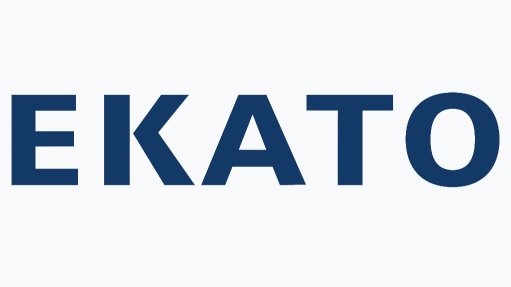M-Pesa goes global
First things first – M-Pesa stands for mobile pesa, with pesa being Swahili for money (I have been busy building up my Swahili vocabulary ever since Basic Education Minister Angie Motshekga announced a few months ago that Swahili would be offered in South African schools as an optional foreign language in the next few years; that’s why I know).
M-Pesa was launched in Kenya in 2007 by South Africa-headquartered mobile telephone giant Vodacom’s Safaricom subsidiary as a basic service for the texting of small payments between users. Now, the platform also allows users to deposit money into interest-bearing accounts stored on their cellphones and to redeem the deposited funds for regular money at a small fee. The money can be withdrawn from a network of agents that include vendors of airtime vouchers and retailers acting as banking agents. Users may also take out small loans using the service.
Since its launch 11 years ago, M-Pesa has been rolled out to many countries, including the Democratic Republic of Congo, Lesotho, Mozambique, South Africa, Tanzania, Afghanistan, Albania, India and Romania. What is more, Safaricom is said to be intent on introducing M-Pesa in Ethiopia, a 100-million-strong market. In Kenya alone, M-Pesa boasts 160 000 agents who facilitated more than 580-million transactions in the three months to the end of June, according to statistics from the Communications Authority of Kenya. In the East African country, M-Pesa has an 80.8% share of the mobile money market; Equitel Money is a distant second, with 6.8%, followed by Mobikash (6.3%), Airtel Money (5.8%) and Mobile Pay (0.3%).
M-Pesa has helped provide access to the formal financial system for millions of users in the countries where it operates, thus facilitating financial inclusion. The service has also been lauded for reducing crime in otherwise largely cash-based societies. To illustrate how impactful it has been, in Kenya, the authorities at some point considered having it hived off from its parent company, because of its size, but have since backed off.
M-Pesa is now a far cry from the basic, inelegant service that was launched in 2007, thanks to several innovative additions intended to ward off competition, broaden its mobile and fintech network and increase user numbers. And these innovations have been coming in quick succession. A ride-hailing service, an ecommerce platform and a music streaming service were all launched in the past few years. February saw Google enabling M-Pesa payments on its app store, making it one of the world’s first digital distribution sites to venture into the mobile money arena. Two months later – in April – M-Pesa joined forces with PayPal in an initiative that makes it possible for ecommerce businesses to seamlessly transfer money between the two services and into users’ cellphones.
All this was followed by the launch, in October, of M-Pesa 1Tap, which makes use of a card, phone sticker or wristband device to ensure secure, faster payments.
And last month, M-Pesa announced a new partnership with Western Union, whereby its 23-million-odd active subscribers will be able to send and receive money through their cellphones and be connected to Western Union’s 500 000 agents scattered across the globe. Transfers through bank accounts in Germany, the United Arab Emirates and the UK will also be feasible, while services to bank accounts in other countries will be introduced in the not-too-distant future.
The partnership also boosts Western Union, which has had to contend with fintech start-ups such as TransferWise and WorldRemit, which offer cheaper and faster online transfers, forcing Western Union to slash its prices and resort to a digital strategy.
M-Pesa has a very interesting history. The idea developed from the realisation that Kenyans were transferring airtime to family or friends, who were then using it or reselling it to other cellphone users. Surely, someone reasoned, a system of money transfer could be created. Safaricom latched on to the idea and, using software developed by a student from Kenya’s Moi University, launched M-Pesa. Now the service is going places.
Article Enquiry
Email Article
Save Article
Feedback
To advertise email advertising@creamermedia.co.za or click here
Comments
Press Office
Announcements
What's On
Subscribe to improve your user experience...
Option 1 (equivalent of R125 a month):
Receive a weekly copy of Creamer Media's Engineering News & Mining Weekly magazine
(print copy for those in South Africa and e-magazine for those outside of South Africa)
Receive daily email newsletters
Access to full search results
Access archive of magazine back copies
Access to Projects in Progress
Access to ONE Research Report of your choice in PDF format
Option 2 (equivalent of R375 a month):
All benefits from Option 1
PLUS
Access to Creamer Media's Research Channel Africa for ALL Research Reports, in PDF format, on various industrial and mining sectors
including Electricity; Water; Energy Transition; Hydrogen; Roads, Rail and Ports; Coal; Gold; Platinum; Battery Metals; etc.
Already a subscriber?
Forgotten your password?
Receive weekly copy of Creamer Media's Engineering News & Mining Weekly magazine (print copy for those in South Africa and e-magazine for those outside of South Africa)
➕
Recieve daily email newsletters
➕
Access to full search results
➕
Access archive of magazine back copies
➕
Access to Projects in Progress
➕
Access to ONE Research Report of your choice in PDF format
RESEARCH CHANNEL AFRICA
R4500 (equivalent of R375 a month)
SUBSCRIBEAll benefits from Option 1
➕
Access to Creamer Media's Research Channel Africa for ALL Research Reports on various industrial and mining sectors, in PDF format, including on:
Electricity
➕
Water
➕
Energy Transition
➕
Hydrogen
➕
Roads, Rail and Ports
➕
Coal
➕
Gold
➕
Platinum
➕
Battery Metals
➕
etc.
Receive all benefits from Option 1 or Option 2 delivered to numerous people at your company
➕
Multiple User names and Passwords for simultaneous log-ins
➕
Intranet integration access to all in your organisation














